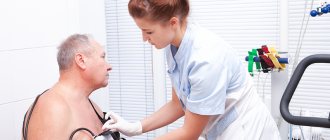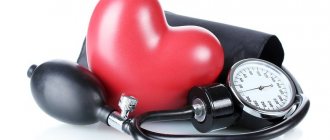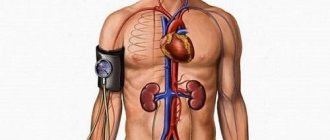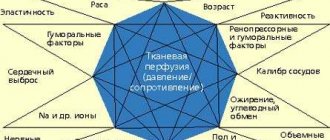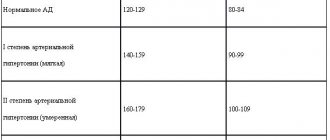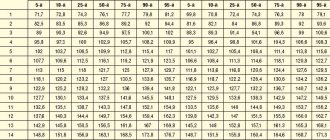Dear patients!
Arterial hypertension (AH) is currently the greatest non-infectious pandemic in human history, determining the structure of morbidity and mortality in the adult population, and its origins are usually found in adolescence.
Hypertension is an independent disease and one of the main risk factors contributing to the development of coronary heart disease, myocardial infarction, stroke and, ultimately, disability and mortality.
The appearance of high blood pressure in adolescence is fraught with the risk of its persistence in subsequent years and an unfavorable prognosis for the occurrence of the above-mentioned cardiovascular diseases.
According to the World Health Organization, arterial hypertension affects more than 1 billion people worldwide, in Europe – about 44% of the population. This problem is also relevant for Belarus. In children and adolescents, hypertension is relatively uncommon and ranges from 2.4 to 18% with age.
Normal blood pressure (BP) is taken to be the values of systolic and diastolic blood pressure corresponding to the gender, age and physical development of the child, determined using special tables. For children and adolescents, it fluctuates and changes depending on age. For example, in a 14-year-old boy with a height of 165 cm, blood pressure can fluctuate within the following limits: systolic blood pressure - from 102 to 125 mm. rt. Art., diastolic blood pressure – from 61 to 78 mm. rt. Art.
The formation of hypertension in children and adolescents can be caused by various factors and causes.
Hypertension can be primary (essential) and secondary (symptomatic).
Primary hypertension is an independent disease. Its cause may be:
hereditary predisposition;
psychosocial stress (increased nervous mental stress);
sedentary lifestyle;
inadequate work and rest regime;
smoking, alcohol abuse;
physiological mechanisms (complex disorders of metabolic processes in the body).
Secondary hypertension in children in most cases occurs against the background of certain diseases:
kidneys (about 70%);
endocrine system (Itsenko-Kushirnga syndrome, thyrotoxicosis, pheochromocytoma, etc.);
cardiovascular system (aortic caorctation, aortic stenosis, aortic valve insufficiency, patent ductus arteriosus), etc.
The main symptom of hypertension is increased blood pressure. Patients may complain of headaches, pain in the heart, poor health, irritability, fatigue, sweating, dizziness, tinnitus, flashing spots before the eyes, nausea, vomiting, nosebleeds.
To avoid untimely detection of hypertension in children, it is recommended to measure blood pressure at the age of 3 years (before entering a nursery school, kindergarten), 1 year before school (5-6 years), immediately before school (6-7 years ), after finishing 1st grade (7-8 years old), at the ages of 10, 12, 14-15, 16 and 17 years old.
Correct measurement of blood pressure is important not only to diagnose hypertension, but also to avoid its overdiagnosis. With a daily dynamic study of blood pressure, measurements should be taken at the same hours, preferably in the morning before meals. The height of the table should be such that the middle of the cuff placed on the shoulder is at the level of the child’s heart. Before determining blood pressure, the child should sit quietly on a chair with a straight back next to the table for at least 5 minutes. Blood pressure is measured on the right arm (in left-handers on the left), three times at 2-3-minute intervals.
To more accurately determine the level of blood pressure, the severity of hypertension and its prognosis, a method for assessing the daily blood pressure profile is used - daily blood pressure monitoring (ABPM). ABPM is indicated for significant fluctuations in blood pressure during one or more visits to the doctor, or if hypertension is suspected. When a disease is detected, treatment is prescribed.
The main goal of hypertension treatment is to achieve sustainable normalization of blood pressure, which reduces the risk of developing early cardiovascular diseases. For children and adolescents, this means achieving a target blood pressure level that is appropriate for age, gender and height.
Treatment of a child with hypertension can be non-drug and medicinal, complex and long-term. In children and adolescents, non-drug therapy is of enormous importance.
The main methods of non-drug therapy in childhood are:
lifestyle changes;
measures to reduce excess body weight;
physical activity;
change in diet and quality of food.
It is known that reducing the calorie content of food through the consumption of animal fats and easily digestible carbohydrates leads to a decrease in body weight, especially
in combination with an increase in physical activity carried out through dynamic loads - swimming, running, team sports. It is necessary to eliminate unfavorable psychological factors if it is possible to find out (conflicts in the family, school). Psychotherapeutic approaches to the treatment of children with hypertension should concern all family members.
The diet used for high blood pressure must meet the following requirements:
it is necessary to limit table salt to 3-7 grams per day;
reduce the consumption of easily digestible carbohydrates (sugar, jam, honey, sweets);
limit animal fats (at least 1/3 of the amount of fats should be vegetable fats);
exclude strong tea, coffee, cocoa, alcoholic drinks, spicy, salty snacks, canned food, spices, smoked foods, fatty meats, fish;
add vitamins A, B1, B2, B6, C, PP to food;
eat food 5-6 times a day;
include foods rich in potassium and magnesium in your diet: nuts, dried fruits, baked potatoes, pumpkin, zucchini, beans, beans, peas, cauliflower, broccoli, bananas, grapes, apricots, peaches, seafood, as well as cottage cheese, hard cheeses, oatmeal.
Drug therapy is prescribed only when all non-drug treatment methods have been used and there is no effect from them. But you should also know that there are conditions that are an absolute indication for the prescription of drug therapy in children with hypertension: secondary hypertension, target organ damage (left ventricular hypertrophy, retinopathy - non-inflammatory degenerative changes occurring in the retina, etc.).
It is necessary to consult a cardiologist if there is any deviation in blood pressure in children, and only a doctor will prescribe a set of examinations, give recommendations on the regimen, diet, determine non-drug or drug treatment and thereby prevent serious illnesses in the future.
What is hypertension in children?
Hypertension in children is a condition of high blood pressure, the norm of which is determined based on:
age;
gender; child growth (based on so-called percentile grids).
Above the 95th percentile (detected at three consecutive doctor visits) is considered high blood pressure. This situation affects about 2 percent of children. Hypertension in children can be primary and secondary, the latter being more common (unlike adults).
It is difficult to determine the cause of primary hypertension, also known as essential hypertension.
Most often this condition is caused by:
overweight, obesity and lack of exercise;
hereditary factors (if a child’s parents suffer from high blood pressure, there is a high probability that he will also have problems with blood pressure). Secondary pressure, on the other hand, is associated with the presence of other diseases in the body (for example, diseases related to the kidneys, heart, or hormones).
How is hypertension diagnosed in children?
The diagnosis of high blood pressure in a child is made by measuring the blood pressure. For a doctor to determine this, blood pressure must be above the 95th percentile for at least three doctor visits. It is also worth measuring your blood pressure at home, especially if the above or other alarming symptoms are present.
Blood pressure is measured using a cuff that is narrower than that used for testing adults. It is better to take the measurement on the right hand, the elbow should be located at the level of the heart. Before the examination, the child needs to be calmed down; it is advisable for him to sit or lie down for 5-10 minutes.
If a child has hypertension, it is necessary to diagnose the underlying disease that caused the situation, or identify factors that could contribute to the increase in blood pressure. To do this, the doctor must carefully take a history and prescribe additional tests, including blood and urine tests, and, if necessary, ultrasound of the kidneys, echocardiography and fundus examination.
Causes of high blood pressure in children
Depending on what type of hypertension a child has, the factors that cause it will be different. When secondary pressure occurs more often in children and adolescents, it may be caused by an underlying medical condition.
Very often this group includes:
kidney diseases (including renal parenchyma and vessels);
thyroid diseases; heart diseases. In children suffering from hypertension, the most common reasons for this are: excess weight; obesity; poor nutrition; low physical activity.
To counteract this type of hypertension, it is necessary to take care of proper nutrition (exclude sweets, unhealthy snacks, salt, sugary carbonated drinks, etc.) from the menu, as well as provide the child with sufficient physical activity.
Genes may also be responsible for high blood pressure in children. If there is a history of high blood pressure in immediate family, this may also affect the child.
Symptoms
- Decreased muscle tone (“seal feet” and “heel feet”).
- Weak congenital reflexes (swallowing, grasping).
- The appearance of tremor (shaking) and convulsions.
- Vomiting like a fountain.
- Strabismus.
- Graefe's sign (a white stripe between the pupil and the upper eyelid).
- Rising sun sign (the iris is almost half hidden behind the lower eyelid).
- Opening of the sutures of the skull, bulging and tension of the fontanel.
- Increased head circumference growth (by 1cm every month).
- Swelling of the optic discs.
In order to establish the true cause of hypertensive-hydrocephalic syndrome, it is necessary to conduct a comprehensive clinical examination of the child:
- Echoencephalography (EchoEG); rheoencephalogram (REG); radiography of the skull; computed tomography (CT); electroencephalography (EEG).
- Examinations by such specialists as an ophthalmologist, a neurologist, a psychiatrist (long-term hypertensive-hydrocephalic syndrome can lead to atrophy of the cerebral cortex and, subsequently, to delayed mental development), and a neurosurgeon are necessary.
Causes
Congenital
- The course of pregnancy and childbirth with complications.
- Hypoxic (bradycardia, intrauterine hypoxia and intrauterine growth retardation) and ischemic (trauma during childbirth) brain damage.
- Premature birth (up to 36-34 weeks).
- Head injuries during childbirth (subarachnoid hemorrhage).
- Intrauterine infections (toxoplasmosis, influenza, cytomegalovirus infection and others).
- Congenital abnormalities of brain development.
- Delayed birth (at 42 weeks and later).
- Long water-free period (more than 12 hours).
- Chronic diseases of the mother (diabetes mellitus and others).
Purchased
- Tumors, abscesses, hematomas, parasitic cysts of the brain.
- Foreign bodies in the brain.
- Fractures of the skull bones.
- Causeless intracranial hypertension.
- Infectious diseases (malaria, tick-borne encephalitis).
- Metabolic disorders.
How to treat hypertension in children?
Hypertension in children is treated whenever possible without medications or using minimal doses.
If it is possible to lower blood pressure through non-medical measures, such as lifestyle changes or diet, such measures are recommended.
If another condition, such as one related to the kidneys, heart, or hormones, is causing hypertension, appropriate treatment should be started immediately. And when it becomes necessary to include antihypertensive drugs, it is recommended to take them in the lowest possible doses and in the smallest amount, if possible and reasonable.
A child diagnosed with arterial hypertension should be under the supervision of a medical specialist, and after treatment, his condition must be constantly monitored.
Symptoms of hypertension in children
Hypertension in children very often does not produce any symptoms. However, symptoms such as:
headache;
dizziness; vomit; nausea; lack of appetite; growth retardation; d hyperactivity or, conversely, apathy and impaired consciousness.
Conversely, signs such as bedwetting, frequent trips to the toilet or difficulty urinating, and swelling of the face and limbs may indicate high blood pressure due to kidney disease.
